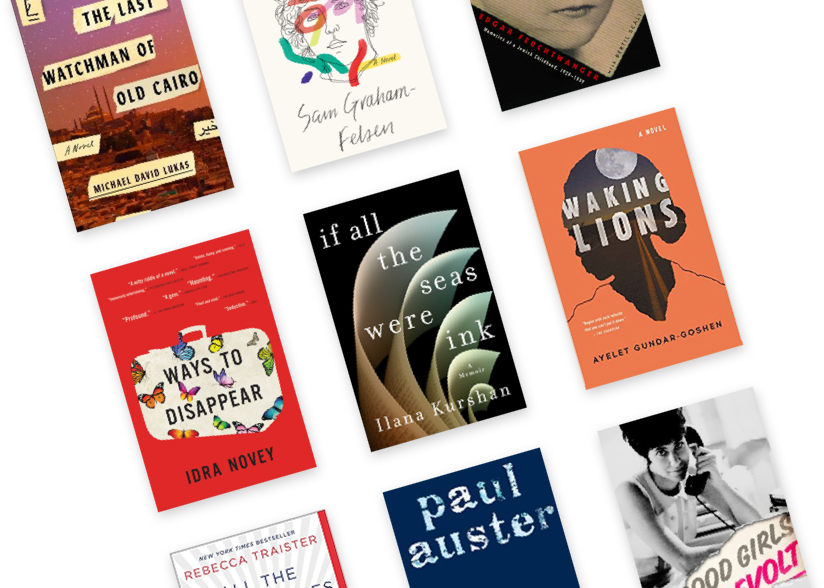When Josef Lewkowicz was just sixteen years old, he joined a group of youths in his hometown of Dzialoszyce, Poland to help the partisans blow up a bridge to obstruct the German advance into their country. “We were still freethinkers and had not yet been worn down by the yoke of slavery,” he writes.
Unfortunately, the bravado of this rash teenager was not to last long. A few months later, the Jewish police announced that Dzialoszyce was being made Judenrein—Jew-free. “It felt like a signal that the end of the world was nigh.”
And indeed it was. Within days, his family was herded into cattle cars. He and his father were taken to a labor camp near Krakow. His mother and his three younger brothers were sent “to the right,” and were among the six hundred thousand Jews who died at the extermination camp of Belzec between March and December of 1942.
Lewkowicz was eventually sent to the Arbeitslager at Plaszow, a labor camp of twenty-five thousand prisoners that the Nazis had decided to build on the site of two Jewish cemeteries. Lewkowicz’s job was to shovel up the remains of the dead — “skulls, teeth and scraps of humanity” — into a wheelbarrow. The headstones were used to construct pathways to administrative offices and homes of SS officers.
The commandant of Plaszow was Amon Goeth, a man who killed two Jewish policemen at roll call on his first day. He used Jewish holidays as days of mass murder; forced Polish women to be beaten by Russian women and Slovak women to be thrashed by Czech women; urinated on a prisoner he summarily executed for being too tall; and “left bodies in his wake wherever he walked.”
The brutal rule of Goeth turned Plaszow into a death camp, where prisoners — clad only in “pajamas made from tissue paper” — died of back-breaking work in subzero temperatures, disease, and starvation. It was literally “annihilation through work.” But it was Goeth’s murder of Lewkowicz’s dear friend Shlomo that etched the Nazi’s hateful countenance into his mind: “Words cannot convey the intensity of my disgust and hatred I felt for my friend’s murderer.” It was to be Goeth’s undoing.
In 1944, Lewkowicz was packed on a cattle car “that served as a torture chamber and became a tomb” to Auschwitz; he was later sent to Mauthausen. Lewkowicz describes the inhumane conditions at each camp in great detail, though he admits he is “conscious that giving too many examples of depravity may dilute their impact.”
At a subcamp of Mauthausen, he managed to survive by becoming the personal slave of the camp commander, Julius Ludolf, who fell for Lewkowicz’s flattering plea: “I will shine your boots so they shine like the sun.” One of his first tasks was to feed the rabbits, and when he took the risk of biting deep into a carrot, “the flavor exploded in my mouth.” Lewkowicz used this position to scavenge food from the commandant’s leftovers and smuggle it to other prisoners, even storing slices of meat in the hems of his clothes. Ludolf was another vicious commander, widely known for throwing prisoners to their death against the electrified fences. Lewkowicz’s proximity to Ludolf enabled him to easily identify him after the war when he tried to pass himself off as a peasant farmer. Lewkowicz testified against him at the Dachau trials, where he was convicted and executed at Landsberg Prison on May 28th, 1947.
One of the most riveting sections of the book is Lewkowicz’s description of the final days of the war, when, as the liberating armies advanced, the SS fled and the camps were in chaos. “There was no law, no order. More than fifty of the cruelest Kapos were lynched almost immediately,” including one who was burned alive in the crematorium. Starving inmates fought for every scrap of food, and some, in a cruel irony, died from “refeeding syndrome,” because after years of starvation, their digestive systems could not cope.
After Lewkowicz returned home to find that his whole family had perished, he convinced the Allied administrators to let him help track down Nazi war criminals. “I had witnessed their bestial behavior, I knew their faces, their voices, their demeanor, their history, their crimes, I was desperate to help bring them to justice.”
After searching among thousands in the Dachau POW camp, he found a “hunched, rather pitiful figure squatting on the ground like a beggar.” It was the mass murderer Amon Goeth.
The Survivor was previously released in Canada, where it was a Sunday Times bestseller and the winner of the Canadian Jewish Literary Award for Holocaust Literature. Michael Calvin, an award-winning author, assisted Lewkowicz, who is ninety-six, in writing the book. Together they have created a riveting, deeply moving memoir. The writing is descriptive and dramatic, preserving Lewkowicz’s deep emotions. This valuable book captures the neshama, the enduring soul, of the survivor.
Elaine Elinson is coauthor of the award-winning Wherever There’s a Fight: How Runaway Slaves, Suffragists, Immigrants, Strikers, and Poets Shaped Civil Liberties in California.



